Diptera.info :: Identification queries :: Diptera (adults)
Who is here? 1 guest(s)
|
Medina multispina?? > M. separata.
|
|
| Stephen R |
Posted on 09-06-2012 16:43
|
|
Member Location: Clitheroe Lancashire UK Posts: 2396 Joined: 12.06.09 |
c. 4mm, Clitheroe UK, 6 June 2012 I see these every year, and in http://www.dipter...d_id=31687 we debated between M. separata/multispina. That specimen ended up in Chris's collection as M. separata. Checking this year's model in the European key, I can't help arriving at multispina again. The length of the tuft (just over 1/3 of T5), the distribution of the hairs just as in the diagram and the presence (albeit only laterally) of a distinct band of strong fore-marginal dusting all seem to point the same way. On this specimen the surstyli happen to be exserted, but I have no drawings to tell if this helps. Thoughts? Stephen R attached the following image:  [98.09Kb] Edited by Stephen R on 16-06-2012 07:33 |
|
|
|
| Stephen R |
Posted on 09-06-2012 16:44
|
|
Member Location: Clitheroe Lancashire UK Posts: 2396 Joined: 12.06.09 |
2
Stephen R attached the following image:  [121.76Kb] |
|
|
|
| tyrolean |
Posted on 10-06-2012 15:29
|
|
Member Location: Posts: 43 Joined: 24.05.10 |
not an easy distinction.! the key in Cerretti uses more or less the same characters: the setae on sternite 5 should be slightly shorter than 1/3 of tergite 5 in separata and slightly longer in multispina. The drawings, however, which illustrate this are not so clear. Additional characters are: the setae are much recurved in separata and not much recurved in multispina. all these characters ar liable to interpretation. the lower calypter in separata is brown, whereas in m. yellow or light brown. the pruinose band is hard to distinguish from the general pruinosity in s. and well distinguishable in m. so I suppose that you can file your specimen under multispina. |
|
|
|
| ChrisR |
Posted on 10-06-2012 15:50
|
|
Administrator Location: Reading, England Posts: 7699 Joined: 12.07.04 |
I have found single individuals of these species very tricky to identify because, as tyrolean says, the features are open to interpretation. You really just have to plump for one of the other and then, as you build up more material of both species, the distinction should be clearer 
Manager of the UK Species Inventory in the Angela Marmont Centre for UK Biodiversity at the Natural History Museum, London. |
| Stephen R |
Posted on 10-06-2012 21:15
|
|
Member Location: Clitheroe Lancashire UK Posts: 2396 Joined: 12.06.09 |
I would describe the calypter as light brown. Looking at the key and at Herting's own description (http://www.archiv...a_djvu.txt) of Degeeria (Medina) multispina it seems that the species differ much more clearly in the female, so if I can find one of them... |
|
|
|
| ChrisR |
Posted on 10-06-2012 21:51
|
|
Administrator Location: Reading, England Posts: 7699 Joined: 12.07.04 |
Good luck!  Catch plenty and if we can get a series then it will add extra weight to the argument. I'd be happy to have another look at any new specimens, and compare them to your other one again ... see if I can make them something new Catch plenty and if we can get a series then it will add extra weight to the argument. I'd be happy to have another look at any new specimens, and compare them to your other one again ... see if I can make them something new 
Manager of the UK Species Inventory in the Angela Marmont Centre for UK Biodiversity at the Natural History Museum, London. |
| ChrisR |
Posted on 10-06-2012 22:04
|
|
Administrator Location: Reading, England Posts: 7699 Joined: 12.07.04 |
Just had another look at Stephen's older specimen - here are my comments: 1. hard to comment on the tufts because they are a little retracted into the abdomen but they looked quite curved and compact to me, but I do not have any multispina here to compare with. 2. Lower calypter looks brown to me. 3. the pale basal bands on the tergites are only thinly present on the lateral margins ... towards the middle they evaporate and are impossible to distinguish from the darker grey pruinosity. To me that makes it separata but I'd love to see a "real" multispina some day  I'm in the NHM this week (new job!) so I might be able to nip up to the collection and check them out I'm in the NHM this week (new job!) so I might be able to nip up to the collection and check them out 
Manager of the UK Species Inventory in the Angela Marmont Centre for UK Biodiversity at the Natural History Museum, London. |
| Zeegers |
Posted on 15-06-2012 15:09
|
|
Member Location: Soest, NL Posts: 18538 Joined: 21.07.04 |
doubtful specimens are always separata. I have never seen a real multispina. The females are obvious, so start with the females. If you ever find multispina, then go for the male Theo |
|
|
|
| ChrisR |
Posted on 15-06-2012 17:48
|
|
Administrator Location: Reading, England Posts: 7699 Joined: 12.07.04 |
I checked the NHM collection and they have 1 "multispina" but when I checked it Nigel Wyatt and I agreed that it is probably a separata too. So no multispina here either! 
Manager of the UK Species Inventory in the Angela Marmont Centre for UK Biodiversity at the Natural History Museum, London. |
| Stephen R |
Posted on 16-06-2012 07:32
|
|
Member Location: Clitheroe Lancashire UK Posts: 2396 Joined: 12.06.09 |
Thanks everyone. M. multispina is extremely unlikely then. But I'll still look out for a female. |
|
|
|
| Jump to Forum: |




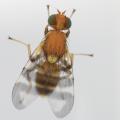
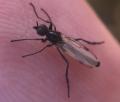

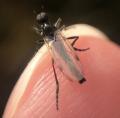
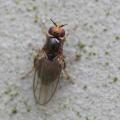


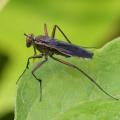


 but don't see the image in the post.
but don't see the image in the post.